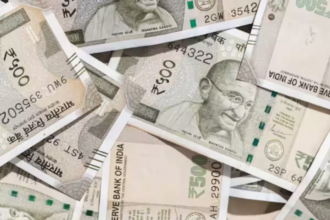Stablecoins, backed by fiat currency or other assets such as gold, are increasingly finding use as everyday money and becoming a part of the global payment infrastructure. Recently, Finance Minister Nirmala Sitharaman admitted that stablecoins are reshaping the currency landscape as well as capital flows, and India has to be prepared to engage with the innovations. Governments across the world are taking steps to bring stablecoins into the mainstream financial systems. “Stablecoins are transitioning from a niche liquidity mechanism to a strategically contested domain of financial infrastructure policy, one that regulators, central banks and incumbents can no longer ignore,” say Sharat Chandra, founder, EmpowerEdge Ventures, and Monica Jasuja, Chief Expansion and Innovation Officer, Emerging Payments Association Asia. Edited excerpts:
Stablecoins were invented as a cash instrument substitute for crypto trading, and perhaps even today, the volumes are coming from trading. What has changed?
Stablecoins have evolved from being a payment instrument to becoming an integral part of financial infrastructure. Incumbent financial institutions are warming up to stablecoins after the US passed the Genius Act. The US Treasury projects that stablecoins could generate as much as $3 trillion in demand for US dollars and Treasury securities by 2030.
Recently, BNY rolled out a money market fund to house reserves for US stablecoin issuers, structured to meet Genius Act requirements. It offers regulated management of reserves held in cash and treasuries, and is open to issuers and eligible institutional investors. The fund’s purpose is to protect reserves for Genius-compliant stablecoins without directly investing in those tokens.
More incumbents are likely to follow suit to capture the stablecoin opportunity in cross-border payments, reserve and Treasury management. Stablecoins are increasingly seen as a catalyst for deeper liquidity across markets. Recent industry surveys, including Fireblocks 2025, show that institutions in Asia are prioritising liquidity management, not just cost reduction, as a major reason for adopting stablecoin solutions.
Stablecoins’ policy relevance has expanded materially. A subset of issuers and market participants are now reframing stablecoins as foundational components of modern payment infrastructure — emphasising programmability, tokenisation and continuous 24/7 settlement capabilities — thereby altering their positioning within the broader financial system.
In effect, stablecoins are transitioning from a niche liquidity mechanism to a strategically contested domain of financial infrastructure policy, one that regulators, central banks and incumbents can no longer ignore.
Can you talk about the usage of stablecoins for real payments?
Stablecoins processed roughly $32 trillion in total transactions in 2024, yet only about $5.7 trillion was tied specifically to cross-border business payments, based on Visa’s estimates. According to a report by Artemis, monthly B2B stablecoin payments surged 30x, from under $100 million in early 2023, to over $3 billion by mid-2025, indicating rapid adoption in cross-border business financ
The sector is expanding quickly, with forecasts suggesting that stablecoins could account for as much as 20 per cent of global cross-border payment flows by 2030. Traditional payment networks and incumbent financial institutions are actively countering the rise of stablecoin-based cross-border payments by accelerating their own tokenisation strategies and modernising settlement infrastructure. Visa, Mastercard, PayPal and major global banks are developing or piloting on-chain settlement using tokenised deposits and regulated stablecoins, effectively replicating the speed and programmability advantages that make stablecoins attractive.
Mastercard’s Multi-Token Network and Visa’s USDC settlement pilots integrate blockchain-based settlement within existing compliance frameworks, while institutions such as JPMorgan and Citi have launched 24/7 tokenised cash and FX settlement platforms that reduce reliance on the slow correspondent-banking chain. At the same time, networks are upgrading traditional rails — through real-time payment interlinkages, tokenised FX and SWIFT’s blockchain interoperability pilots — to close the cost and speed gap.
Is it the best way to deal in cross-border payments? How will it bring down the costs, increase speed and transparency?
In 2024, stablecoins processed an estimated $27.6 trillion in transaction volume, outpacing major card networks like Visa and Mastercard, with $5.7 trillion attributed specifically to cross-border flows.
Stablecoins cut out intermediaries, enabling funds to move instantly between parties and eliminating the ‘float’ — money delayed while in transit. This leads to improved cash flow and more efficient working capital cycles for businesses. By 2030, global enterprises could save around $10 billion per year through stablecoin-powered cross-border payments.
Stablecoin payment systems can reduce transaction times by 30 per cent, compared to the existing methods. They enable direct, traceable payments on blockchain, allowing for improved transparency and security.
While there’s some openness for creating a framework for stablecoin adoption in India, what do you think the RBI is hesitant about?
The RBI Deputy Governor T Rabi Shankar has acknowledged the role of digital currencies in cross-border payments. Speaking on Transformational Technologies and Banking: Key Issues, he said “digital currencies can provide a superior alternative to banks in cross-border payments”. For domestic real time payments, India does not need stablecoins. The use-cases are primarily in the cross-border remittances, and trade where rupee invoicing and settlement is happening. If the RBI does a rethink on INR-backed stablecoins, then it would support the central bank’s objective of internationalisation of rupee effectively, especially with countries where the rupee is already being used for trade.
Is it because the technology to transfer and settle payments can work outside formal banking system, making things difficult to trace?
Not exactly. Stablecoin technology is not inherently designed to evade the formal banking system or render payments untraceable. In fact, stablecoin transfers on public blockchains are highly traceable at the transaction level. Banks are getting involved in stablecoin projects in a big way. Japan’s three major banks are collaborating on a shared stablecoin for cross-border payments under Project Pax, which has recently been recognised by the Financial Services Agency as an official payment innovation project.
Can tokenised deposits, CBDCs be seamlessly integrated with a stablecoin framework?
CBDCs, stablecoins and tokenised deposits can co-exist without disintermediating the banks and serve different use cases. Existing banks can be used to issue stablecoins. In September 2025, a consortium of major European banks, including ING, Banca Sella, KBC, Danske Bank, DekaBank, UniCredit, SEB, CaixaBank and Raiffeisen Bank International, teamed up to introduce a euro-backed stablecoin that meets MiCAR regulatory requirements.
What we need is the regulator’s openness towards new stablecoin related use-cases. The RBI’s sandbox should permit stablecoin-related use-cases to ensure private money innovation complements the central bank’s efforts in making payment systems robust and resilient. Wholesale central bank digital currencies can enable interbank overnight lending and settlement, while tokenised deposits can be used in money market and capital market transactions. Stablecoins have found product market fit in cross-border payments. It’s time to acknowledge and embrace them.





















